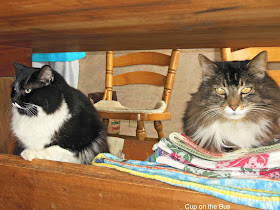Growing up I had only one grandparent, for all practical
purposes, my Grandma Rolf. My father’s
mother died before I was five; I never knew, and scarcely knew of his
father. It took the great folk revival
of the sixties to learn I was Irish.
I pressed my father once about nationality. “I’m American.” I pressed my luck a little
further. “What about your parents?” “They were Americans, too.” He went back to his Scientific American. I asked my mother, and learned my dad was Irish. Her grandmother called him shanty Irish, and
he did not go back into that house until after her grandmother’s death.
In fact my father’s mother was all Irish, his father all
Scots-Irish.
My great grandfather, John William Lytle, was born in 1832,
in Pennsylvania. He worked as a tailor,
then a clerk, then took up teaching.
That career was interrupted by the Civil War. He fought and was wounded at second Bull Run;
his brother was killed at Spotsylvania.
He soldiered on, and was wounded so severely at Antietam he was
discharged. A short biography I found of
him said his wounds hindered him all his life.
He resumed teaching, married Annie Crum, was the town clerk of Coalmont,
Pennsylvania. He held lodge and G.A.R.
offices. In short, a solid citizen,
excepting, as the biography said, he had renounced religious affiliation. “He believes that religion does not consist
in form or mode of baptism, but in character and act.”
John William and Annie had several children; all became
school teachers except George Marion, my father’s father. George was a coal mining engineer. He brought Mary Emma Hogue, his bride, back
to Coalmont to live. She did live there
for seven years, through the birth of my father, John Lindsey, his brother and
two of his sisters. Mamie Hogue Lytle
left Coalmont for her childhood home, Akron, Ohio, pregnant with her fifth
child in seven years. George Marion
posted bond to assure his appearance in court, presumably on a child support
charge. He skipped, went west, lived
under an assumed name, and died fifteen years later. He abandoned his children.
Mamie Lytle, my grandmother, was the daughter of a
stereotypical hard drinking Irishman, James Lindsey Hogue, and devoutly
Catholic wife, Mary Cecelia Maley. James
was in the building trade, and together with his business partner, Frank
Bisson, built the homes on Bisson Avenue, a steep hill in Akron. Grandma Lytle
and her five small children lived first in the attic of the Hogue home on
Bisson Avenue. Mamie’s eight living
siblings, her parents, her children burst its seams. Mamie and the five children lived in a series
of rented homes in the area, leaving when the rent was due. The children lived on and off with relatives
and in the Akron Children’s Home.
Alcoholism and Catholicism were the genes predominately
infused in the Hogue line. My father was bitter about each. His grandfather Hogue was a mean drunk, his
grandmother a strict Catholic. His
mother being the oldest sibling, he grew up with some of his aunts and uncles
as contemporaries. As adults he saw some
fall to alcohol. He was equally bitter about, as he considered it, the
sacrifice of a cousin and his sister Ruth, to the church as priest and nun. When I asked her, Aunt Ruth never believed
she was forced to be a nun; I have no idea what his cousin thought.
My father left the church at age twelve. His lot was miserable. He was generally in charge of his band of
siblings; his mother absent. There was
not enough food. Housing was iffy. His Catholic education was supervised by his
grandmother, until his epiphany: his mother was devout but the institution that
led to five children in seven years was not housing the children or feeding
them, no matter what the reason his mother had left his father. The Hogue clan
never forgave him.
I grew up on the North Hill of Akron, Ohio, with a large
contingent of red headed Hogue descendents living on the other end of the
parish that was St. Martha’s. The rift
was so complete, in spite of my mother’s best effort, we never knew them. My cousins, children of my father’s sisters,
do not know them. Apparently there is no
grudge like an Irish grudge.
My father was aptly named for his grandfather, the Scots
Irish who soldiered on. The father who
abandoned the children was brought home by his brother to be buried, but
apparently in an unmarked grave. There
is no stone marking George Marion in the line of Lytle’s beginning with John
William and Annie Crum Lytle.
My own Grandma Lytle lay in an unmarked grave for fifty
years, until my mother said enough is enough.
Her children did not mark her grave, I will. And so my Grandma Lytle has a stone, in All
Soul’s, where her non Catholic children chose to bury her.
Considering my heritage on this St. Patrick’s Day, although
I like to consider myself Irish, I pull up Grandma Rolf’s corset strings and follow
Mom’s conscience when there’s work to be done.
And since I’m still Irish, Erin go bragh.




























.jpg)







.jpg)
.jpg)









